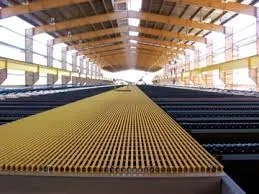
-
 Afrikaans
Afrikaans -
 Albanian
Albanian -
 Amharic
Amharic -
 Arabic
Arabic -
 Armenian
Armenian -
 Azerbaijani
Azerbaijani -
 Basque
Basque -
 Belarusian
Belarusian -
 Bengali
Bengali -
 Bosnian
Bosnian -
 Bulgarian
Bulgarian -
 Catalan
Catalan -
 Cebuano
Cebuano -
 China
China -
 China (Taiwan)
China (Taiwan) -
 Corsican
Corsican -
 Croatian
Croatian -
 Czech
Czech -
 Danish
Danish -
 Dutch
Dutch -
 English
English -
 Esperanto
Esperanto -
 Estonian
Estonian -
 Finnish
Finnish -
 French
French -
 Frisian
Frisian -
 Galician
Galician -
 Georgian
Georgian -
 German
German -
 Greek
Greek -
 Gujarati
Gujarati -
 Haitian Creole
Haitian Creole -
 hausa
hausa -
 hawaiian
hawaiian -
 Hebrew
Hebrew -
 Hindi
Hindi -
 Miao
Miao -
 Hungarian
Hungarian -
 Icelandic
Icelandic -
 igbo
igbo -
 Indonesian
Indonesian -
 irish
irish -
 Italian
Italian -
 Japanese
Japanese -
 Javanese
Javanese -
 Kannada
Kannada -
 kazakh
kazakh -
 Khmer
Khmer -
 Rwandese
Rwandese -
 Korean
Korean -
 Kurdish
Kurdish -
 Kyrgyz
Kyrgyz -
 Lao
Lao -
 Latin
Latin -
 Latvian
Latvian -
 Lithuanian
Lithuanian -
 Luxembourgish
Luxembourgish -
 Macedonian
Macedonian -
 Malgashi
Malgashi -
 Malay
Malay -
 Malayalam
Malayalam -
 Maltese
Maltese -
 Maori
Maori -
 Marathi
Marathi -
 Mongolian
Mongolian -
 Myanmar
Myanmar -
 Nepali
Nepali -
 Norwegian
Norwegian -
 Norwegian
Norwegian -
 Occitan
Occitan -
 Pashto
Pashto -
 Persian
Persian -
 Polish
Polish -
 Portuguese
Portuguese -
 Punjabi
Punjabi -
 Romanian
Romanian -
 Russian
Russian -
 Samoan
Samoan -
 Scottish Gaelic
Scottish Gaelic -
 Serbian
Serbian -
 Sesotho
Sesotho -
 Shona
Shona -
 Sindhi
Sindhi -
 Sinhala
Sinhala -
 Slovak
Slovak -
 Slovenian
Slovenian -
 Somali
Somali -
 Spanish
Spanish -
 Sundanese
Sundanese -
 Swahili
Swahili -
 Swedish
Swedish -
 Tagalog
Tagalog -
 Tajik
Tajik -
 Tamil
Tamil -
 Tatar
Tatar -
 Telugu
Telugu -
 Thai
Thai -
 Turkish
Turkish -
 Turkmen
Turkmen -
 Ukrainian
Ukrainian -
 Urdu
Urdu -
 Uighur
Uighur -
 Uzbek
Uzbek -
 Vietnamese
Vietnamese -
 Welsh
Welsh -
 Bantu
Bantu -
 Yiddish
Yiddish -
 Yoruba
Yoruba -
 Zulu
Zulu
frp ladder
Understanding FRP Ladders A Comprehensive Overview
In the world of construction and maintenance, safety and efficiency are paramount. Among the various tools that facilitate these qualities, FRP (Fiber-Reinforced Polymer) ladders stand out for their unique properties and benefits. This article aims to provide a detailed overview of FRP ladders, exploring their composition, advantages, applications, and maintenance practices.
What is FRP?
FRP or Fiber-Reinforced Polymer is a composite material made of a polymer matrix reinforced with fibers, typically glass or carbon. This combination results in a material that is lightweight yet incredibly strong and durable. The use of FRP in ladder manufacturing has gained immense popularity due to its superior characteristics compared to traditional materials like wood and metal.
Composition of FRP Ladders
FRP ladders are constructed using layers of resin and fibers that are molded into the desired shape. The process usually involves the following steps
1. Selection of Fibers Glass or carbon fibers are chosen based on the required strength and flexibility. 2. Resin Infusion A resin, generally a thermosetting polymer, is infused with the fibers to create a solid structure. 3. Molding The mixture is then molded into ladder shapes and cured to enhance its strength. 4. Finishing After molding, additional coatings may be applied to improve resistance to chemicals or UV light.
Advantages of FRP Ladders
1. Lightweight One of the most significant benefits of FRP ladders is their lightweight nature, which makes them easy to transport and set up. This characteristic reduces physical strain on workers and enables convenient maneuvering in tight spaces.
2. Corrosion Resistance FRP is highly resistant to corrosion, making these ladders ideal for industries exposed to harsh environments, such as chemical manufacturing, marine applications, and wastewater treatment facilities.
3. Non-Conductive FRP ladders do not conduct electricity, making them a safe option for electrical work or in environments where electrical hazards are present. This feature significantly reduces the risk of accidents related to electrocution.
frp ladder

4. Durability When properly maintained, FRP ladders can have a long service life. They are resistant to rotting, cracking, and rusting, ensuring that users can rely on them for years.
5. Reduced Maintenance Unlike wooden ladders that require regular treatments to prevent decay or metal ladders that may need painting or rust removal, FRP ladders can typically be cleaned with mild soap and water to maintain their condition.
Applications of FRP Ladders
FRP ladders are extensively used across various sectors
- Construction Sites Their lightweight and durable nature makes them ideal for maneuvering around scaffolding and heights. - Electrical Work The non-conductive property allows electricians to work safely near live wires. - Chemical Plants Their resistance to corrosive substances makes them valuable in industries dealing with hazardous materials. - Marine Applications They are often used in shipbuilding and maintenance due to their resistance to saltwater and other corrosive elements. - Utilities Maintenance Their strength and durability make them suitable for accessing high structures like power lines and telecommunication towers.
Maintenance Practices
Maintaining FRP ladders is relatively straightforward
- Regular Inspections Regularly check for any signs of wear or damage, especially after heavy use or exposure to adverse conditions. - Cleaning Use mild detergents to clean the surface and remove any accumulated dirt or chemicals. Rinse thoroughly to prevent any residues from affecting the ladder’s operations. - Avoiding Sharp Objects Store and handle the ladders carefully to prevent scratches or dents that could compromise their integrity.
Conclusion
In summary, FRP ladders represent a remarkable advancement in ladder technology, combining strength, safety, and durability in a lightweight design. Their unique properties make them suitable for a wide range of applications, ensuring that workers can perform their tasks effectively while minimizing risks. As industries continue to prioritize safety and efficiency, the popularity of FRP ladders is likely to grow, solidifying their place as an essential tool in many work environments.









